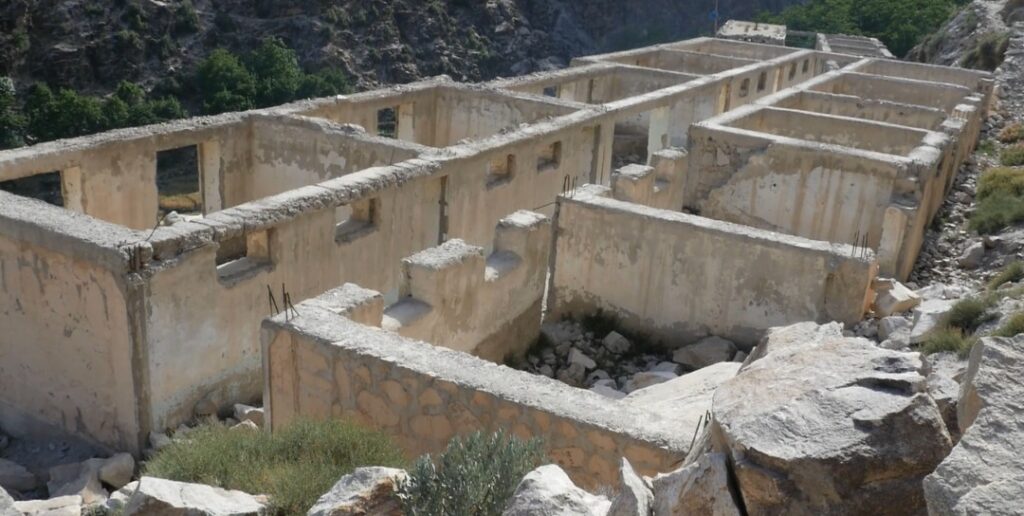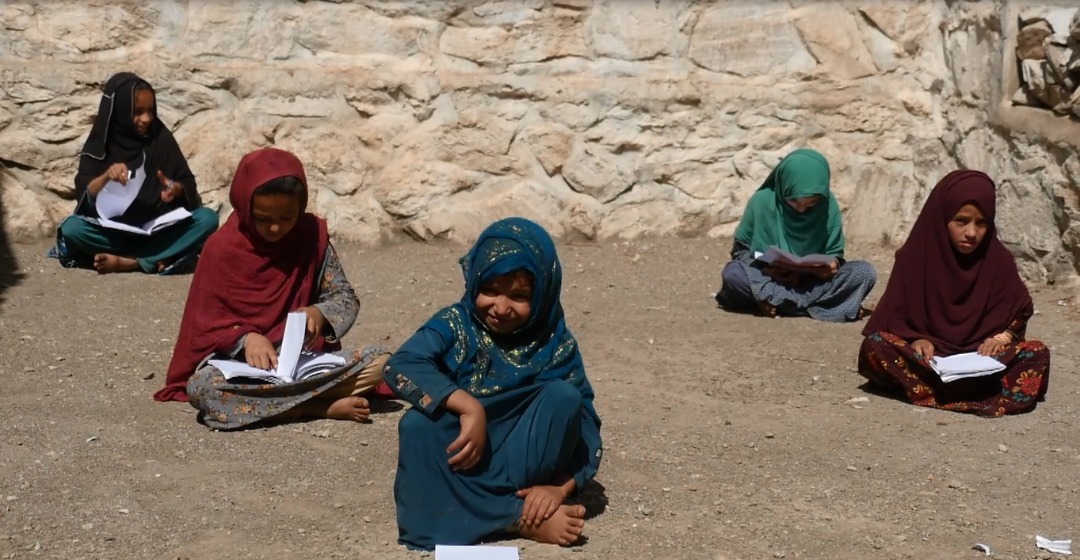Almost 70 percent of schools in Nuristan province have no school buildings and many are far from villages, which means children have no option but to walk long distances every day, teachers in the province said.
Wadhu school in Noorgram district is one such school, which has no building – forcing children to learn outdoors, with no shelter.
These children are also forced to walk long distances, across rough terrain, to reach their school.
“Our school has no building. Our school has no desks, no chairs. We have no pencils or pens,” said Aisha, one student. “We study here when the weather is warm, but when there is rain, we are off.”

“I come from a village far away. The roads are damaged. I climb mountains every day. We face the risk of falling. We ask the government to build a school for us,” another student from Wadhu primary school, Habiba, said.
Officials from the school said they don’t have the ability to address the issue on their own despite having tried to many times over the past years.
According to them, there are dozens of schools like Wadhu primary in Nuristan.

“At least 300 children come to this school from three villages. They face dangers on the way. There is rain and wind. If the sky is clear, we come here but if it is cloudy, we face problems,” said Mohammad Noor, principal at Wadhu school.
“The school has no roof and no windows, no chairs, no floors. We sit under trees where we don’t have a floor, chairs, pens or stationary,” said Mohammad Haneef, a schoolteacher.
Figures show Nuristan has 214 schools and 36,000 students, including 16,000 girls.
The lack of infrastructure and buildings at schools is a serious problem across Afghanistan. Even in Kabul, houses are often rented and used as makeshift schools for students in the absence of formal facilities.
Taliban authorities in Nuristan acknowledged the problem and said that as a temporary solution, they will distribute tents for schools.




